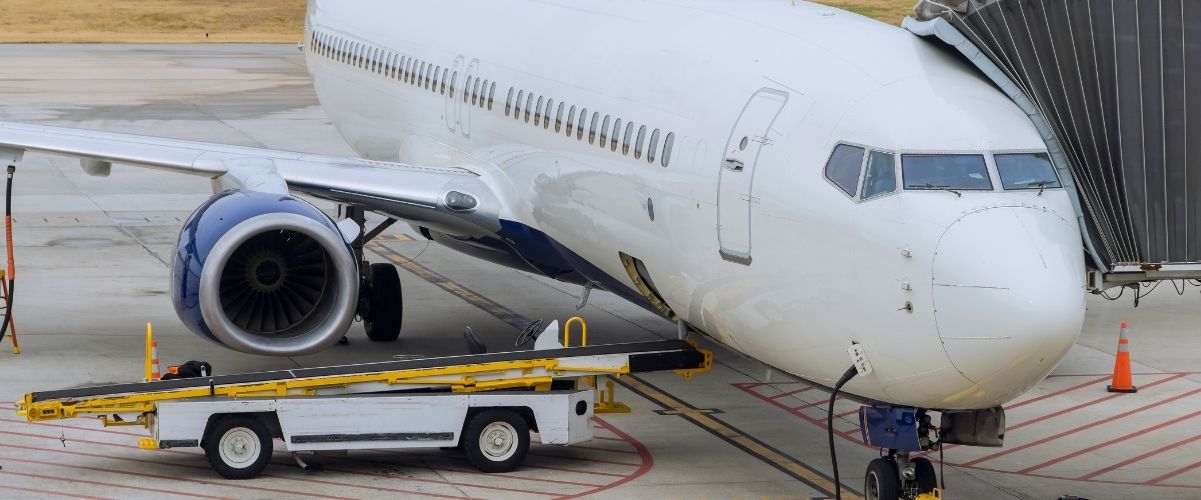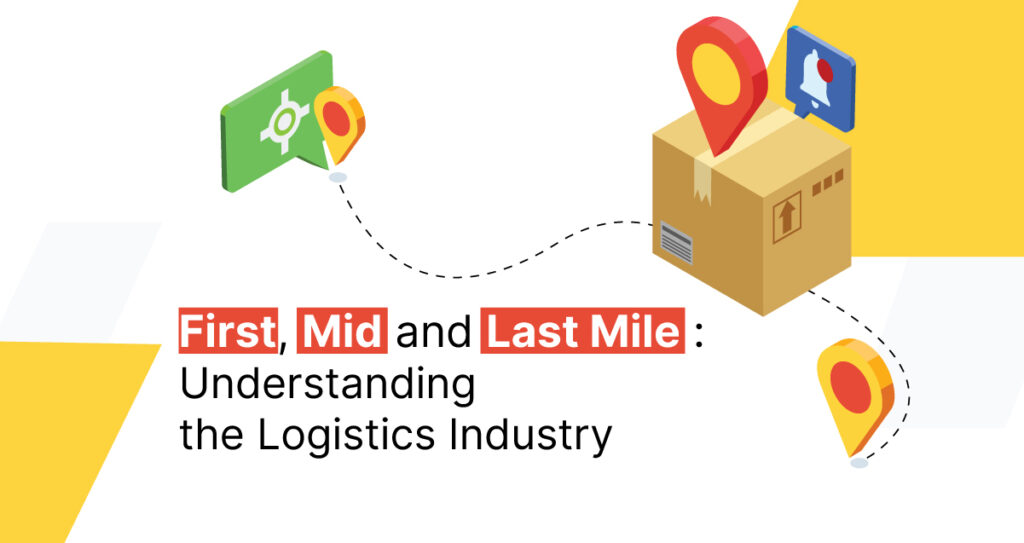The movement of goods from the manufacturer to the end-consumer comprises many steps and checkpoints. Businesses must run these stages efficiently to ensure the supply chain does not suffer delays or closures. First-mile, mid-mile and last-mile delivery are terms used within the distribution and supply chain industries. They reflect the movement of goods from conception to consumption.
Read on to learn more about each stage in the supply chain. Deep dive into the roles of first, mid, and last mile in the logistics industry, real-life examples and other quick facts.
Quick Definitions
First-Mile Logistics: The transfer of goods from the manufacturer to a warehouse or distribution centre.
Mid-Mile Logistics: The transfer of goods from a warehouse or distribution centre to fulfillment facilities.
Last-Mile Logistics: The transfer of goods from a transportation hub or a retail store to the final delivery destination.
First Mile Delivery
What is First Mile Delivery?
First-mile delivery, or first-mile logistics, is the transfer of goods from a manufacturer to a warehouse or distribution centre. The origin of these products can be from anywhere in the world and from any provider. Simply, once a good is manufactured, wherever it goes next is known as the first mile.

This step of the logistics process is crucial as the goods are coming directly from the manufacturer. Whether it’s a brick factory down the street, designer clothes from Europe or candles from your own home, these products are all in the manufacturing phase.
Once the goods are created, they journey to a warehouse or distribution centre. This journey is defined as the first mile and can be a short or long distance, depending on the final destination of the product. The warehouse or distribution centre coordinates the rollout of the products. Generally, this results in selling the items to fulfillment centres to sell to end consumers.
So, how does it work?
Let’s say I am a beekeeper in Ontario, Canada, who uses the beeswax from my bees to make candles and other apiary products. To get my candles into the hands of a customer, I decided to sell my products to a mediator. This middle person takes my products and sells them to the general public and big box stores. My products need to get from my farm to a distribution centre for this to happen. They travel by transport vehicles, freight and sometimes by plane, known as the first mile.

In short, the first mile is the starting point of the logistics industry. Without it – goods would never leave manufacturing facilities. It’s an exciting stage of the logistics industry because it begins right at the starting point – where the goods are manufactured.
Mid Mile Delivery
What is Mid-Mile Delivery?
Mid-Mile delivery, also known as second mile delivery, is the transfer of goods from a warehouse or distribution centre to fulfillment facilities. Simply, it is when products are moved from a storage facility to a facility that holds products briefly, packs products into orders and gets them out to consumers. Let’s break down the two significant players within the mid-mile process. There are storage facilities and fulfillment centres.

Storage facilities: can be generalized to factories or point-of-origins. Factories are generally local facilities that host a wide range of products. Point-of-origins are generally freight, seaports or airports. Traditionally, the goods that come from these places come from overseas. They are the first step in the mid-mile process.
Fulfillment centres: The second step in the mid-mile process is fulfillment centres. These are the facilities that house products for short periods. When orders come in, the fulfillment centre organizes and packs the products to be shipped to their final destinations. From there, the goods are taken to be delivered directly to the consumers – also known as last-mile delivery.
So, how does it work?
The end consumer does not have a role in the mid-mile process. This is generally between a supplier and a seller. For example, Business A (the seller who runs a fulfillment facility) from Business B (the supplier). Business A is in Chicago, and Business B is in Vancouver, Canada. Business A needs to receive the goods from a point-of-origin, most likely an airport. The goods travel from the airport to Business A’s fulfillment centre.

In short, the mid-mile is the crutch of the logistics industry. Without it – products would never get from a storage centre to a fulfillment facility. The first step of this process can look very different depending on where the products are coming from – leading to a unique delivery process every time.
Last Mile Delivery
What is Last-Mile Delivery?
Last-mile delivery, or last-mile logistics, is the movement of goods from a transportation hub or a retail store to the final delivery destination. It is known as same-day delivery, next-day delivery, express delivery or just standard delivery. Simply put, it’s the last step in the delivery process.

The goal of last-mile delivery is speed. The faster parcels get delivered, the happier customers are. The one caveat to speed, though, is price. This is because the last mile is the most expensive part of the delivery process.
The industry must adapt to escape the high price tags of traditional last-mile delivery partners. The future of last-mile delivery rests in technology advancements. To become cost-effective, businesses must leverage technology to automate processes. As a result, save time and money, creating a technology-first e-commerce delivery partners market. This market section is rapidly growing, with no sign of slowing down.
So, how does last-mile delivery work?
If you’re a consumer shopping online, you encounter the last-mile delivery process whenever you place an order somewhere. The shop you purchased a product from will either handle the last-mile process in-house or hire a 3rd party logistics provider (3PL) to fulfil the delivery. If it is a 3PL, they will either have the product shipped or travel to the store and pick it up themselves. After that, the provider will coordinate and execute the delivery of the product right to your door.

In short, the last mile is the most crucial part of the logistics industry. Without it – consumers would never get their products. Changes within the industry are prompting companies to pivot and consider new ways to make deliveries. Last-mile delivery in particular has seen many changes with no solutions in the industry. Affordable prices and the latest technology are at the forefront of these changes.
How FlashBox Can Help with Last-Mile Delivery
FlashBox is a logistics company that built its proprietary software in-house. We organize the delivery of goods, most often to the final consumer. We also provide distribution from warehouses to storefronts. In short, FlashBox can be your one-stop shop for logistics needs with a specialization in Same-Day Delivery.
Subscribe to our Youtube channel here. We post industry-related tips and tricks.
LinkedIn | Instagram | Twitter | Facebook







